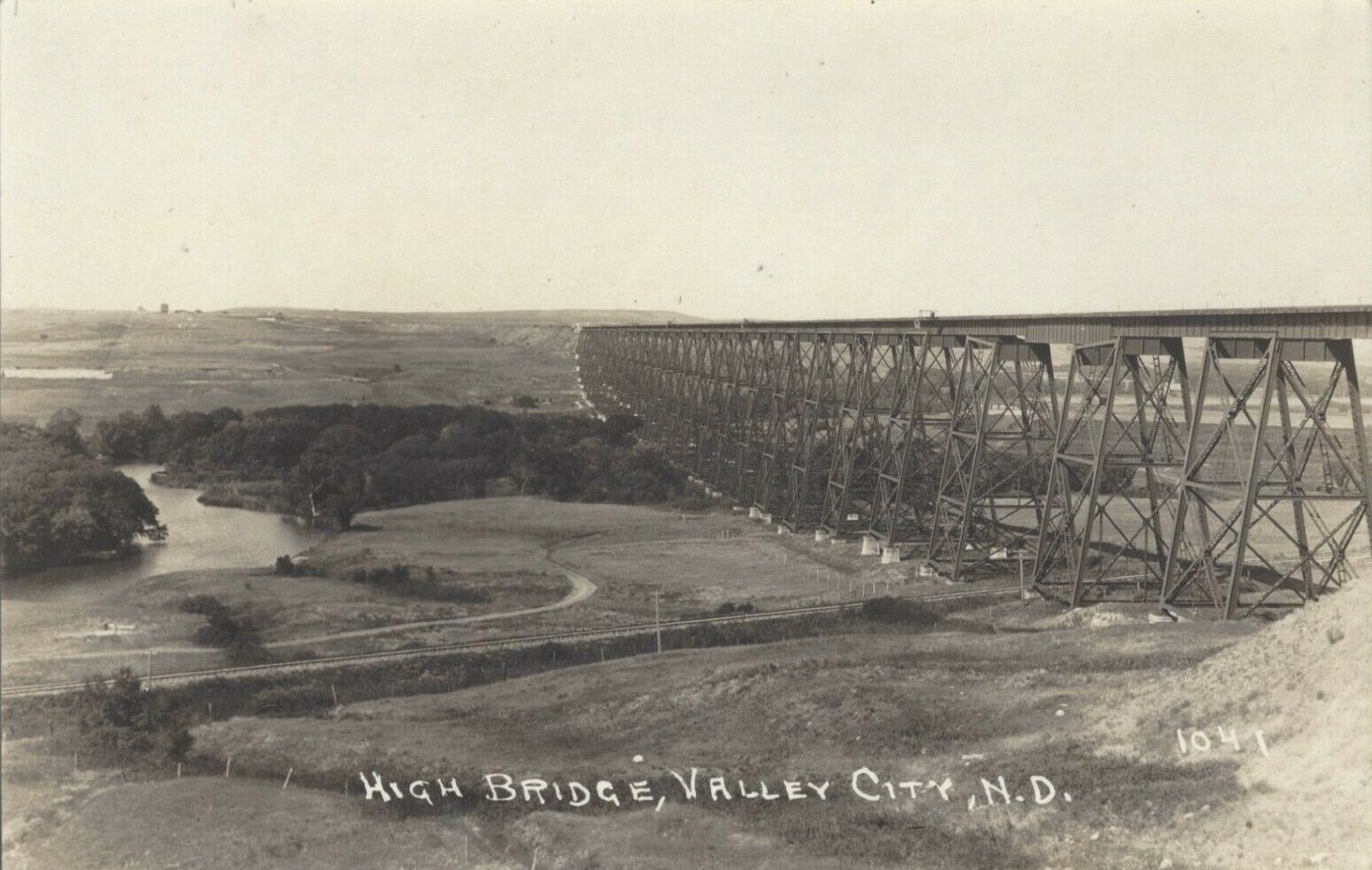This massive high trestle crosses the Sheyenne River and its massive valley at Valley City.
Because of the nature of the area, the Sheyenne River carved a deep valley at this location. THe Northern Pacific built this bridge to bypass the steep grades of going through Valley City.
The bridge is a massive high trestle, with the main spans resting on steel bents. In addition, the towers and other substructures are made of concrete.
Of the large bridges in North Dakota, this structure is the second highest and the longest. It is longer and taller than the Gassman Coulee Trestle near Minot, but shorter in height than the Karnak Bridge to the north at Karnak.
The structure contains a total of 27 towers, meaning there are 55 spans in the bridge. The bridge is easily seen from the west side. The east side is harder to access, because it crosses an active Canadian Pacific line.
The bridge was built as a single track bridge, but it appears that it can be converted to double track with relative ease.
Overall, it appears that the bridge remains in relatively good condition.

Historic photo of the bridge
The author has ranked this bridge as being regionally significant, due to the lack of notable railroad bridges in Western Minnesota and North Dakota.
The photo above is an overview.
